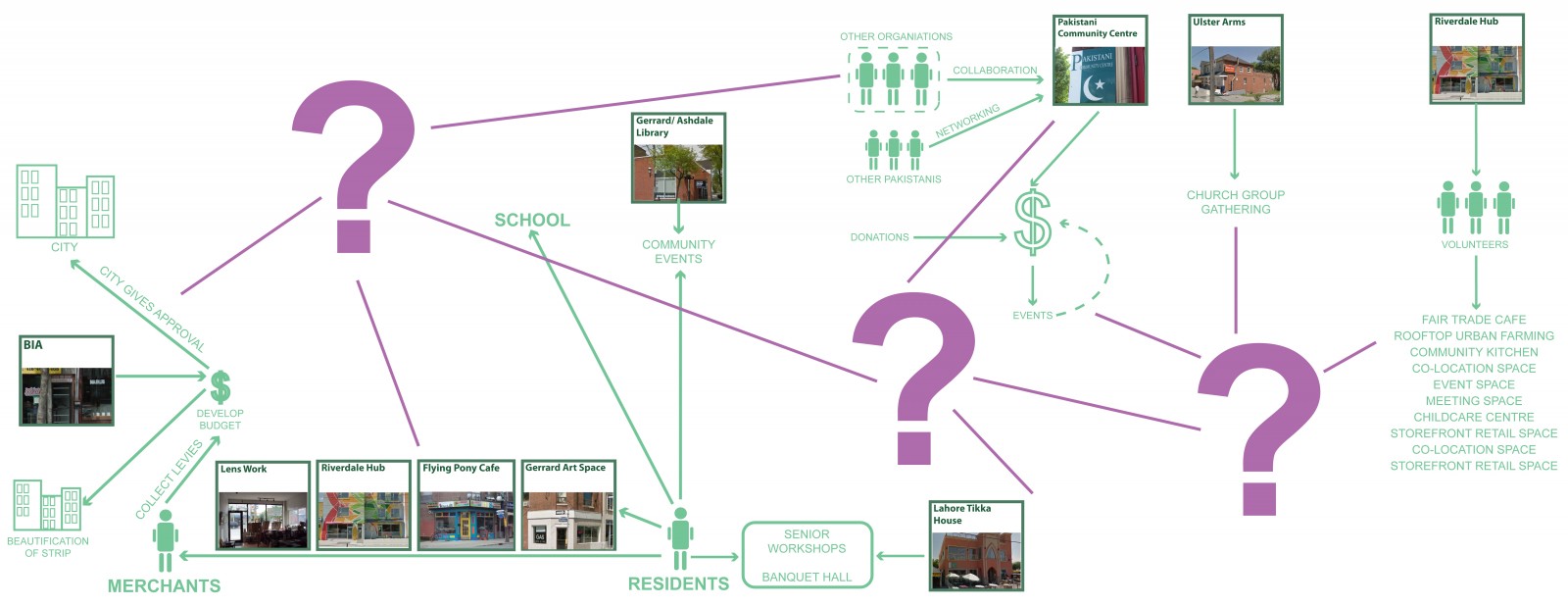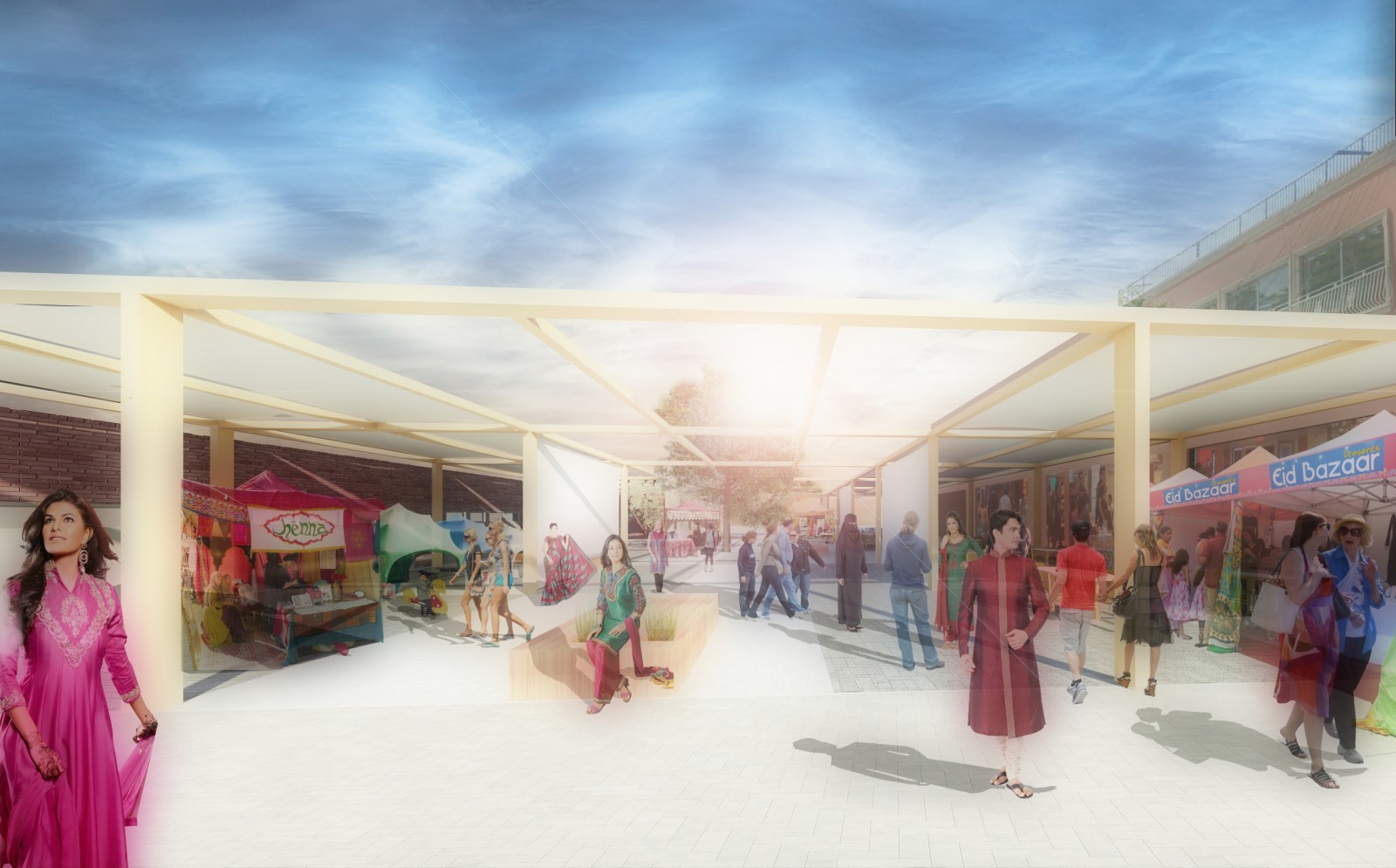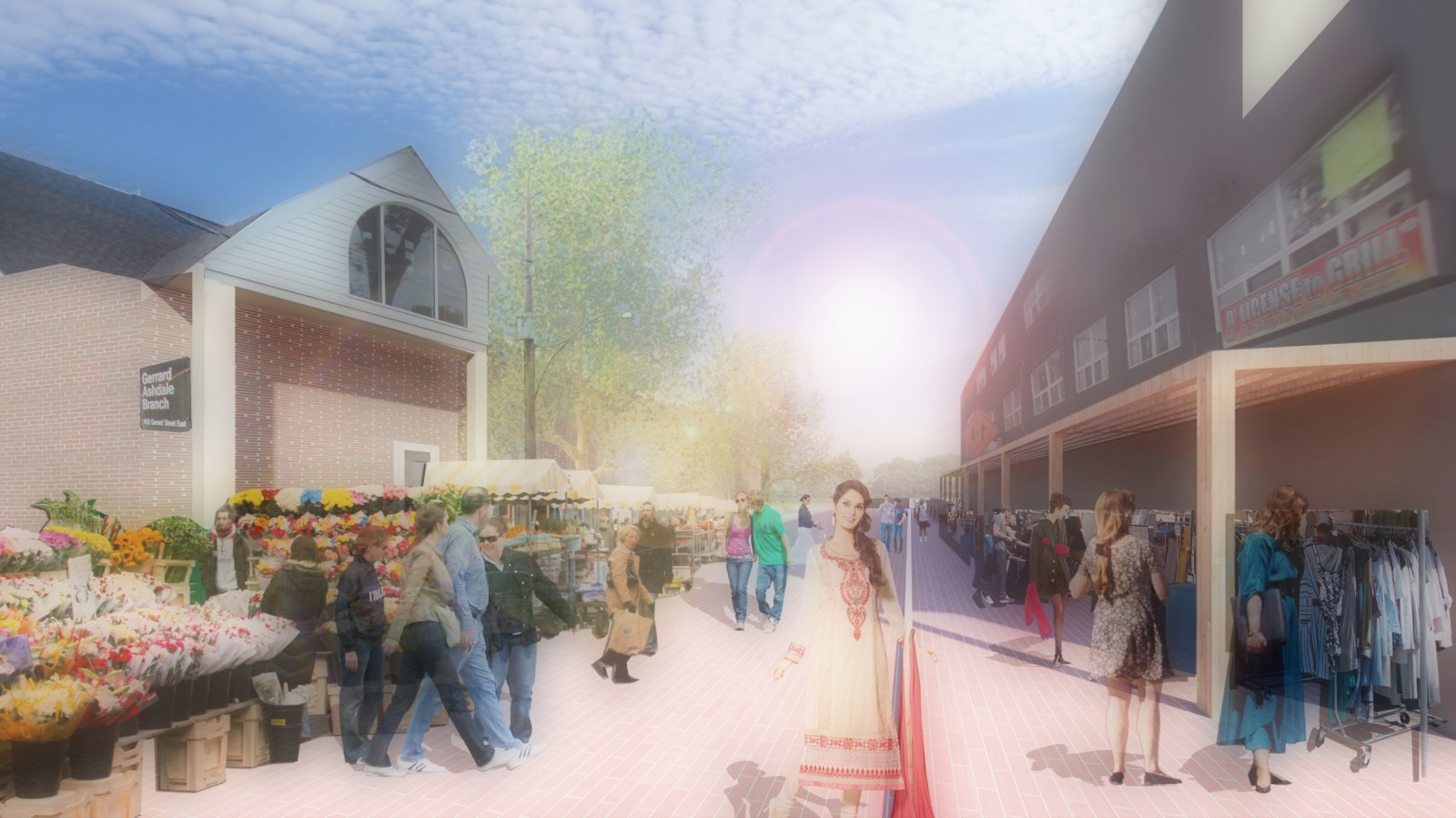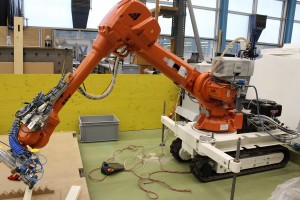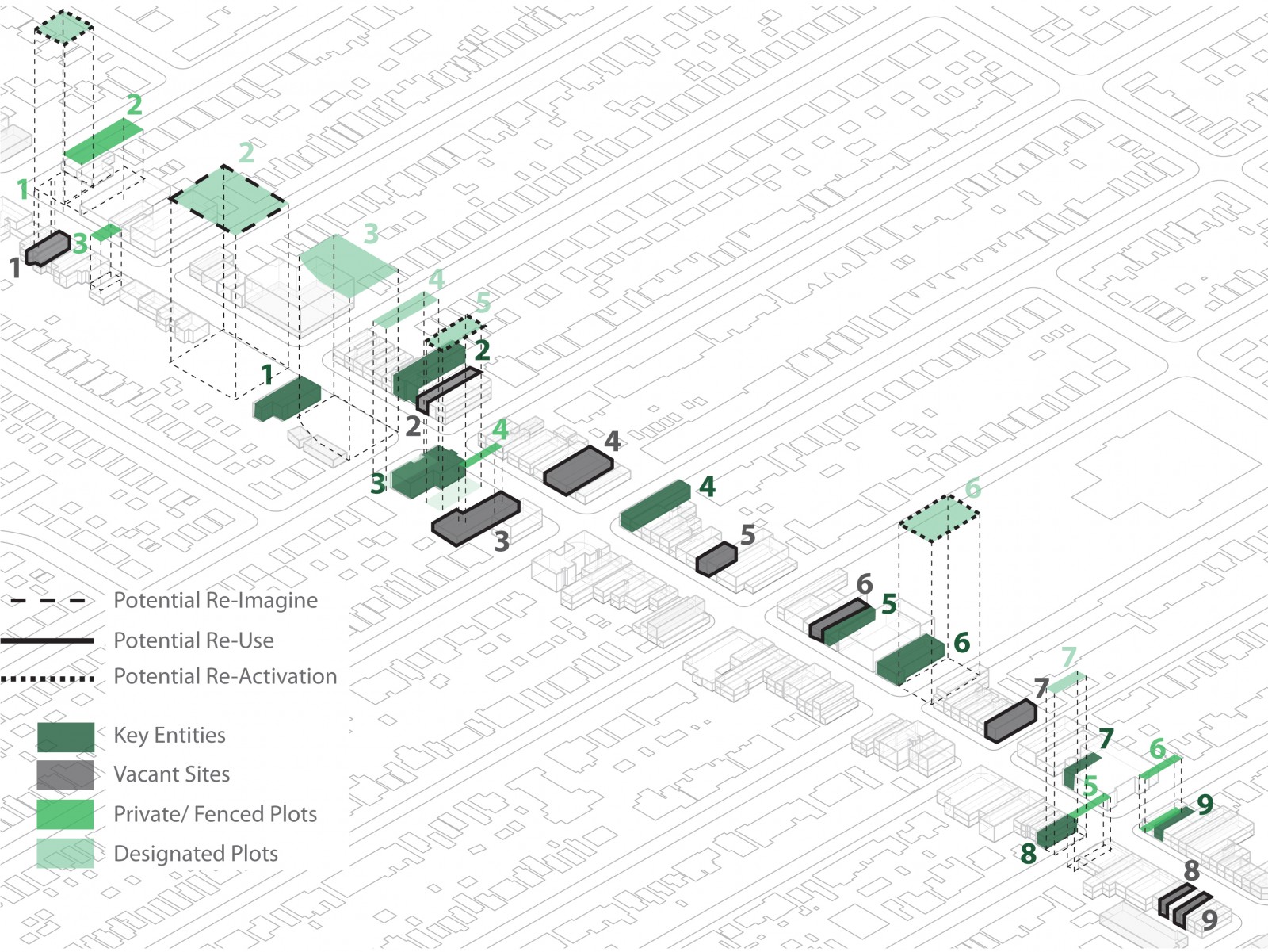
Cultural Connectivity: Design as a method to facilitate cultural exchange
within the Gerrard Bazaar
Abstract by Sundus Shaikh
As immigrants choose to reside within the suburbs and the city undergoes rapid geographical change, Toronto’s ethnic enclaves are facing significant transformation in terms of their neighbourhood demographics, economic conditions and function. The Gerrard Bazaar is a prime example of an ethnic retail strip that is struggling with its changing identity and day-to-day role, as the South Asian population gradually reduces within the area, while young, non-South Asian families continue to move in. Once a thriving Indo-Pakistani retail destination, the ethnic enclave has witnessed significant economic decline leading to fluctuating levels of urban vacancy. Among the many South Asian shops, there lies an increasing presence of mainstream coffee shops and specialty stores that have replaced declining South Asian retail enterprises over time. Various social and business organizations are also situated along the strip, yet a significant number of their efforts to regenerate the enclave, operate in an isolated manner. There also remains a cultural divide within the area as well as a general lack of solidarity among the merchants and organizations within the bazaar.
This thesis suggests that the key to reviving the Bazaar as well as other declining ethnic enclaves, lies in promoting new networks of “cultural exchange” in which architecture and urban design can be a facilitator of new interactions and symbiotic relationships among different organizations and individuals. It comprises of a demographic, historic, architectural and spatial analysis as well as in-depth human research that studies how visitors and inhabitants of the Gerrard Bazaar perceive the ethnic enclave, and what culture means to them. These discovered studies and personal insights influence the design process and are meant to serve as a new technique by which one can study the notion of culture and how it informs architecture and urban interventions. Thus, the focus of thesis is on the method by which architecture and design is produced, in response to the lack of cultural exchange.
The way in which this method translates research into design, is through the formulation of a manual of “design strategies” that serves as a template for the design intervention. This manual is applied to three different sites within the Gerrard Bazaar, for three types of unique design proposals – a re-activated plaza, an adaptively re-used square and a re-imagined senior’s residential complex. These proposals are not meant to “freeze” the changes that are taking place within the Gerrard Bazaar, but rather, respond to the gentrification in a positive manner and acknowledge the demographic trend that is transpiring within the neighbourhood.
It is envisioned that these new interventions would act as catalysts in fostering a new sense of community and revitalizing the day-to-day life of the neighbourhood. In addition, they would serve to optimize the existing functions and events of the ethnic enclave and act as anchor points along the strip. Moreover, the presence of these interventions and the changes that they bring, are meant to help the bazaar pave the path to a new identity where its cultural heritage is shared and promoted, yet its demographic and cultural transition are acknowledged and integrated.
The examining committee is as follows:
Supervisor: Mona El Khafif, University of Waterloo
Committee Members: Adrian Blackwell, University of Waterloo
Val Rynnimeri, University of Waterloo
External Reader: Zhixi Cecilia Zhuang, Ryerson University
The Defence Examination will take place on Friday May 1, 2015 12:30 PM ARC 2003
A copy of the thesis is available for perusal in ARC 2106A.
